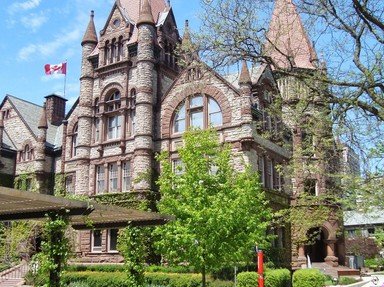Quiz Answer Key and Fun Facts
1. Which of the following Ontario towns, with the same name as a U.S. state, was founded during the 1830s by David Thompson, had a Greek revival mansion called Ruthven, and eventually had its name changed to "Deans" in 1876?
2. In 1914, a tiny worker's community was established due to the high abundance of "Medina Shale" found in the area. Which of the following ghost towns was located amongst this hard clay between the towns of Cheltenham and Terra Cotta?
3. In 1911, the Algoma Central & Hudson Bay Railway built a 12 mile stretch of railway from their primary line so that new equipment and a smelter could be brought to this location to set up a new mine. The mine and community were powered by a hydroelectric plant built at Steephill Falls. What town was this?
4. After a series of devastating fires (many of which are still debated to have been criminal in nature) including the final one which destroyed the engine house and locomotive from the local mill, most of the residents of this town would move to the community of Kiosk (which is also a ghost town) by 1938. What milling town succumbed to this unfortunate tragedy?
5. What ghost town originally took on the name of "Lett" and then would have its name changed to honour those who took part in the Egyptian Nile Expedition of the 1800s?
6. This small milling town was founded after the British government rewarded two loyal officers with 1200 acres of land for their services during the War of 1812. What historical town was this?
7. Two years after the remaining residents of this ghost town were forced to evacuate the community due to treacherous soil conditions, the original main street collapsed due to severe erosion leaving a crevice 680m long and 320m wide. What town was this?
8. Many early towns struggled to survive because they did not have a railroad connection to sustain the community. Which of the following ghost towns, however, had the unique distinction of having two railways (one at each end of town)?
9. This community was the original location for the distillery that has now grown into a multi-million dollar producer of many brands of alcohol including Canadian Club, Wiser's Deluxe, Polar Ice Vodka, and Beefeater Gin. What ghost community is this?
10. This ghostly location was technically not really a town at all, but merely a set of homes and settlements found along a 6 km stretch of winding side road branching from the Opeongo Road. What unusual location was this?
Source: Author
apathy100
This quiz was reviewed by FunTrivia editor
minch before going online.
Any errors found in FunTrivia content are routinely corrected through our feedback system.
